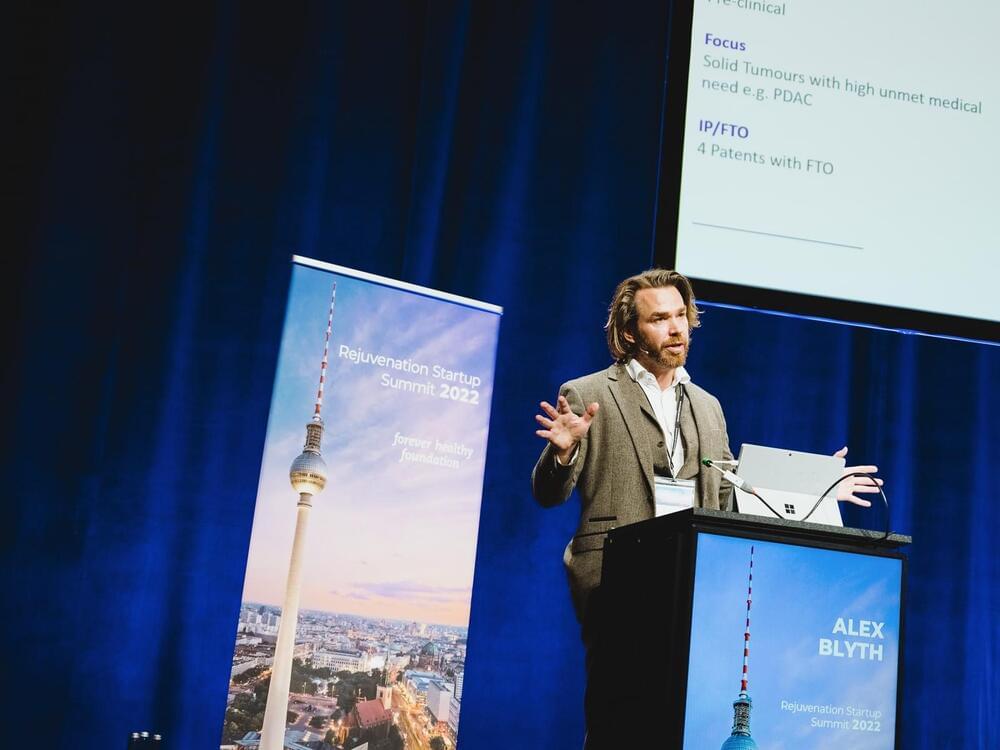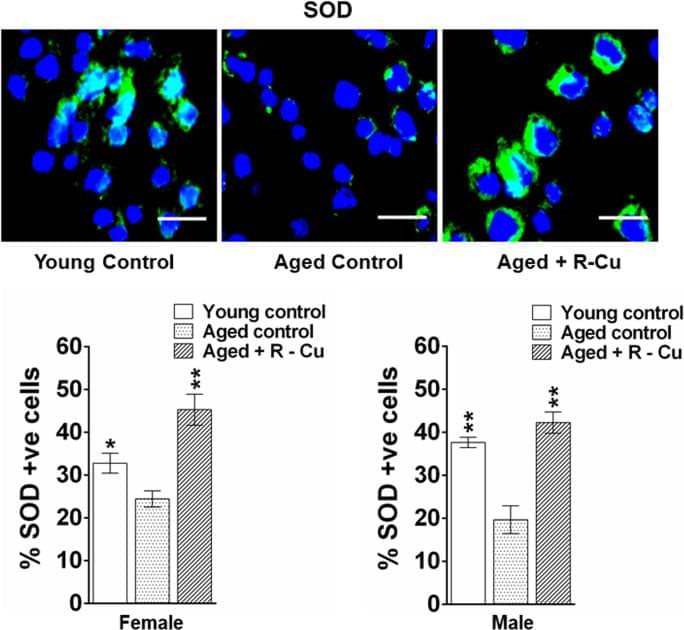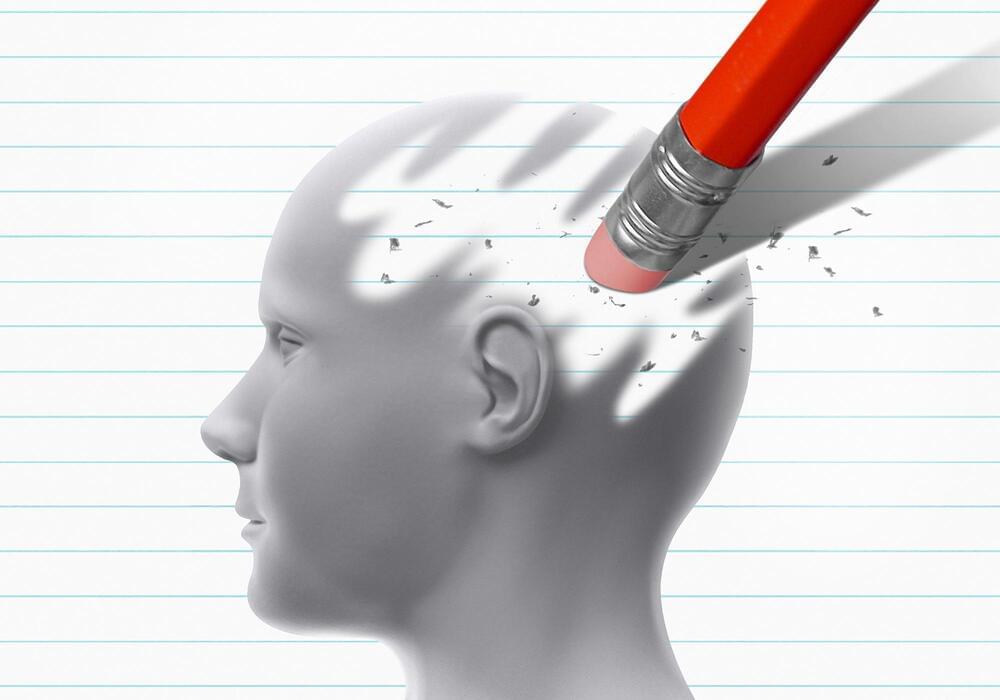https://youtube.com/user/COPL18
We teach the scientific rationality of age reversal, radical life-extension, & we provide fellowship for longevity enthusiasts. Longevity lives here!
https://youtube.com/user/COPL18
We teach the scientific rationality of age reversal, radical life-extension, & we provide fellowship for longevity enthusiasts. Longevity lives here!

We use cookies on our website. Some of them are essential, while others help us to improve this website and your experience. If you are under 16 and wish to give consent to optional services, you must ask your legal guardians for permission. We use cookies and other technologies on our website. Some of them are essential, while others help us to improve this website and your experience. Personal data may be processed (e.g. IP addresses), for example for personalized ads and content or ad and content measurement. You can find more information about the use of your data in our privacy policy. You can revoke or adjust your selection at any time under Settings.
RIYADH, Saudi Arabia—(BUSINESS WIRE)— Hevolution Foundation, a non-profit organization that provides grants and early-stage investments to incentivize research and entrepreneurship in healthspan science, announces a new grants program to encourage research into the aging process in Saudi Arabia, as part of the growing Saudi scientific ecosystem. The program, Hevolution’s Open Call for Grant Applications in Saudi Arabia, will provide funding of up to 500,000 Saudi Riyals for local researchers with an interest in the mechanisms of aging.
“This grants program is the first of many through which we aim to encourage the development of the field of aging research in Saudi Arabia” Tweet this
“Saudi Arabia’s population is relatively young but has high rates of age-related conditions such as heart disease and diabetes,” commented Mehmood Khan, MD, Hevolution Foundation’s Chief Executive Officer. “Our hope is that by tackling the aging process itself, we can alleviate the burden of diseases and conditions of aging for the people of Saudi Arabia and worldwide. With this pilot program and others that we have in the works, we hope to enable Saudi Arabia’s scientific community to be a key player in the global charge to reduce the burden of age-related diseases and conditions that affect most of humanity.”
The Aging and Drug Discovery Conference (ARDD) 2022 is pleased to present David Sinclair from Harvard Medical School, who shares new unpublished results from his lab at Harvard Medical School.
Held in Copenhagen at the glorious Ceremonial Hall, this meeting gathers the most prominent figures of the aging and longevity research field, from scientists to clinicians, investors, developers, and everything in between. The fast growth of the conference is evidence of its great quality. In 2022 we had around 400 people on-site, and many others joined through the web.
To find out more check www.agingpharma.org #ARDD #ARDD2022 #Longevity

The Inaugural Rejuvenation Startup Summit 2022, brought to you by the Forever Healthy Foundation, took place with over 400 participants from over 30 countries in October. It is a vibrant networking event that aims to accelerate the development of the rejuvenation biotech industry. The Summit brings together startups, members of the longevity venture capital / investor ecosystem, and researchers interested in founding or joining a startup – all aiming to create therapies to vastly extend the healthy human lifespan. We started to publish videos with a first set of selected speakers on the 2022 summit:
Foresight Biotech & Health Extension Meeting sponsored by 100 Plus Capital.
Program & apply to join: https://foresight.org/biotech-health-extension-program/
This video was recorded at the Foresight Longevity Workshop.
Join us:
► Twitter: https://twitter.com/foresightinst.
► Facebook: https://www.facebook.com/foresightinst.
► Instagram: https://www.instagram.com/existentialhope/
► LinkedIn: https://www.linkedin.com/company/foresight-institute.
If you enjoy what we do please support us via Patreon: https://www.patreon.com/foresightinstitute.
If you’re interested in joining these meetings consider donating through our donation page: https://foresight.org/donate/
Foresight Institute advances technologies for the long-term future of life, focusing on molecular machine nanotechnology, biotechnology, and computer science.
Subscribe for videos concerning our programs on Molecular Machines, Biotechnology & Health Extension, Intelligent Cooperation, Neurotech, Space, and Existential Hope.

ROS are short lived molecular species containing an unpaired electron which makes them highly reactive as they search for another electron to pair with, and in the process can damage biomolecules such as DNA, proteins and lipids54. ROS induced oxidative stress is known to have multiple deleterious effects on host cells55. However, we have reported that, paradoxically, when ROS is artificially generated outside the cell in the extracellular spaces of the body, they can have wide ranging therapeutic effects18,19,20,26,27. Admixing R with Cu leads to generation of oxygen radicals by virtue of the ability of R to reduce Cu (II) to Cu (I)23,25. Oxygen radicals that are generated in the stomach upon oral administration of R–Cu are apparently absorbed to have systemic effects in the form of deactivation/eradication of extracellular cfChPs. We have shown that cfChPs have wide-ranging damaging effects on host cells. For example, cfChPs can readily enter into the healthy cells to damage their DNA, activate inflammatory cytokines and promote apoptosis via the mitochondrial pathway13,14. Given that 1 × 109–1 × 1012 cells die in the body every day56,57, we have hypothesised that repeated and lifelong assault on healthy cells by cfChPs derived from the dying cells may be the underlying cause of ageing15,16. In support of this hypothesis we show in this article that prolonged oral administration of R–Cu to ageing mice down-regulated multiple biological hallmarks of ageing and neurodegeneration by virtue of its ability to deactivate cfChPs. Our results suggest that R–Cu may qualify as an ideal anti-ageing agent since it has the potential to simultaneously retard or delay the many conditions that are associated with ageing2. To be globally applicable, an ideal anti-ageing agent should also be inexpensive and non-toxic—the two criteria that are also met by R–Cu. The latter can be easily administered orally, and both R and Cu are already approved for human use. An illustrated summary of the study design and the mechanisms by which R–Cu generated oxygen radicals eradicate cfChPs from brain micro-environment leading to down-regulation of ageing hallmarks is provided in Fig. 10.
The mechanism(s) by which R–Cu down-regulates the multiple biological hallmarks of ageing and neurodegeneration needs elaboration. Reversal of telomere shortening by R–Cu may suggest that telomere shortening could be a consequence of DNA damage inflicted by cfChPs which shear off telomere ends causing them to shorten. We observed differential effects between female and male mice with respect to telomere abnormalities. R–Cu effects in preventing telomere abnormalities in female mice were statistically significant for all parameters tested, while this was not the case in male mice. The biological explanation for this discrepant finding remains to be determined. Breakage of telomere ends may also help to explain our detection of persistent γ-H2AX signals in telomere regions of brain cells (DNA-SCARS)—an established signature of senescence43. The bare chromosomal ends can fuse with each other to lead to chromosomal instability and aneuploidy48, as was detected in our study.
Just a quick vid. He mentions the hope of replacing current gene therapy with a pill or three which I heard Cynthia Kenyon say many years ago.
Dr David Sinclair talks about longevity genes, genes therapies and his works on resetting the eyes in this short clip.
David Sinclair is a professor in the Department of Genetics and co-director of the Paul F. Glenn Center for the Biology of Aging at Harvard Medical School, where he and his colleagues study sirtuins—protein-modifying enzymes that respond to changing NAD+ levels and to caloric restriction—as well as chromatin, energy metabolism, mitochondria, learning and memory, neurodegeneration, cancer, and cellular reprogramming.
Dr David Sinclair has suggested that aging is a disease—and that we may soon have the tools to put it into remission—and he has called for greater international attention to the social, economic and political and benefits of a world in which billions of people can live much longer and much healthier lives.
Dr David Sinclair is the co-founder of several biotechnology companies (Life Biosciences, Sirtris, Genocea, Cohbar, MetroBiotech, ArcBio, Liberty Biosecurity) and is on the boards of several others.

Alzheimer’s disease (AD) is a debilitating progressive illness that begins with mild memory loss and slowly destroys cognitive function and memory. It currently has no cure and is predicted to affect over 100 million people worldwide by 2050. In the United States, AD is the leading cause of dementia in older adults and the 7th most common cause of death, according to the National Institute on Aging.
Ongoing Alzheimer’s research is focused on two key neurotoxic proteins: amyloid beta (Aβ) and tau. Although these proteins have been shown to be associated with AD, the levels of Aβ and tau do not consistently explain or correlate with the severity of cognitive decline for some people with the disease.
Investigators at Brigham and Women’s Hospital, a founding member of the Mass General Brigham healthcare system, set out to identify other proteins that may be directly involved with fundamental aspects of AD, like synaptic loss and neurodegeneration. They exposed laboratory neurons to human brain extracts from about 40 people who either had AD, were protected from AD despite having high Aβ and tau levels, or were protected from AD with little or no Aβ and tau in their brains.
